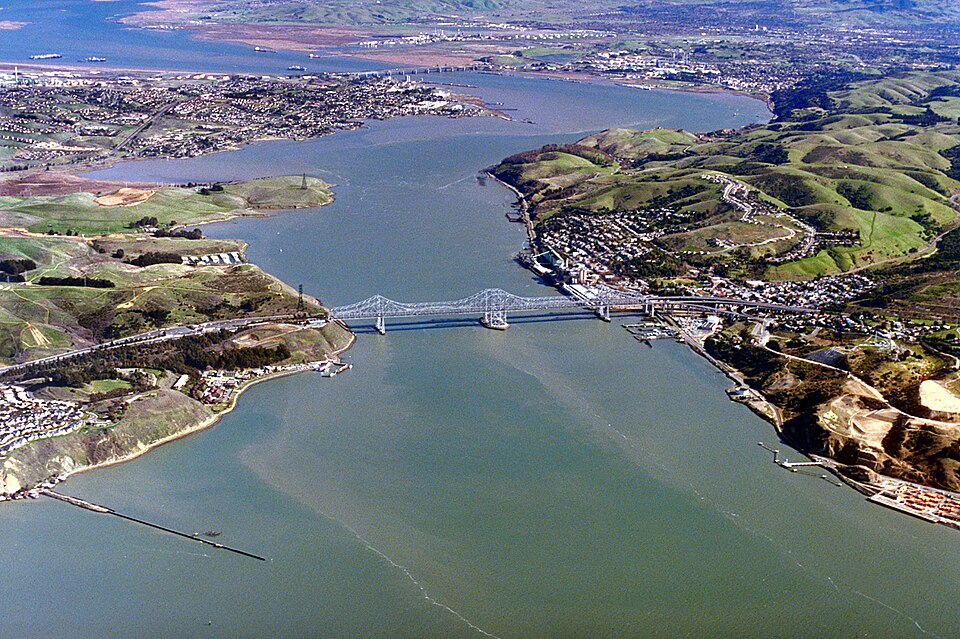Fire Restoration and Resiliency along the Carquinez Strait
Join us and EBRPD for a habitat restoration event!
By Whitney Grover
California has a complicated relationship with fire. On the one hand, fire is a destructive force, threatening our homes and infrastructure, at times even our lives. On the other, fire is a part of our natural ecology; the indigenous peoples and their plant and animal relatives depend on fire to cultivate healthy ecosystems and foster abundant natural resources.

The fires we see today are not the same as the lower-intensity burns practiced by the indigenous people for over 10,000 years in California. Today fires are fueled by introduced plant species and dryer, warmer weather conditions. They burn hotter and faster due to a century of fire suppression practices. The landscape as a whole is no longer sprawling wilderness with natural breaks in the patchwork of biomes, but a sprinkling of homes and businesses ever at risk of being in the fire’s path.
Land managers like East Bay Regional Park District (EBRPD) have their work cut out when it comes to preventing high-intensity fires in the future, and dealing with burn areas in the aftermath of a fire. On the south side of the Carquinez Strait, nestled between the towns of Crockett and Port Costa is an EBRPD property that exemplifies the need for fire resiliency and restoration. They refer to it as the Scenic Fire Restoration and Resiliency Project. The site certainly is scenic, but also lies just north of Carquinez Scenic Drive. The best place to access the trails is the Bull Valley Staging Area.

As you head out on the trails you’ll be surrounded by the rolling golden hills and Turkey Vultures soaring above. As you round a corner, the Carquinez Strait comes into view. But most notably, you’ll recognize the stands of eucalyptus, jutting up, impossibly tall and lean in what was once an oak savanna. European thistles and grasses dominate the understory. With the combination of this vegetative fuel, dry hot windy weather, and the unique steep sloping topography, the “fire triangle” is complete, and the site is extremely prone to fire.
The first fire at the site in recent history was in 1983, before EBRPD acquired the property. That fire cleared all the eucalyptus, but without ongoing management of the resprouts, they grew back. Later, another fire in 2004 burned the west side of the site near Crockett. Most recently, the Scenic Fire swept through the north east area in 2022. The town of Port Costa was evacuated and in the end 120 acres burned, including 18 acres of eucalyptus groves at high severity. Fortunately there was no loss of life or property in the Scenic Fire, but it clearly showed a new approach to managing the land was needed.
In December 2022 EBRPD got to work restoring the site to grassland and oak savanna, starting by removing the burned and dead trees. In 2023 they began planting buckeyes and oaks, with acorns sourced from a local reference site further east. Continuing the work, they’ve planted monkeyflower, wild rose, yarrow and more to diversify the understory. Elderberry and several native forb species have volunteered, popping up in the hillside all on their own. As the project continues, more eucalyptus will be removed and ultimately replaced with native species.
This fall you can be part of the future of fire resiliency and restoration! On Friday November 14th, EBRPD and Golden Gate Bird Alliance will be hosting a volunteer habitat restoration event from 9:30am-11:30am at the Scenic Fire Site. Learn more and register HERE.
Thank you to Rose Samuelson, EBRPD Ecologist for the history and current information shared in this article!
Whitney Grover is the Director of Conservation for Golden Gate Bird Alliance. She participated in the 2019 Master Birder class and is a co-founder of the SF Bay chapter of the Feminist Bird Club.
